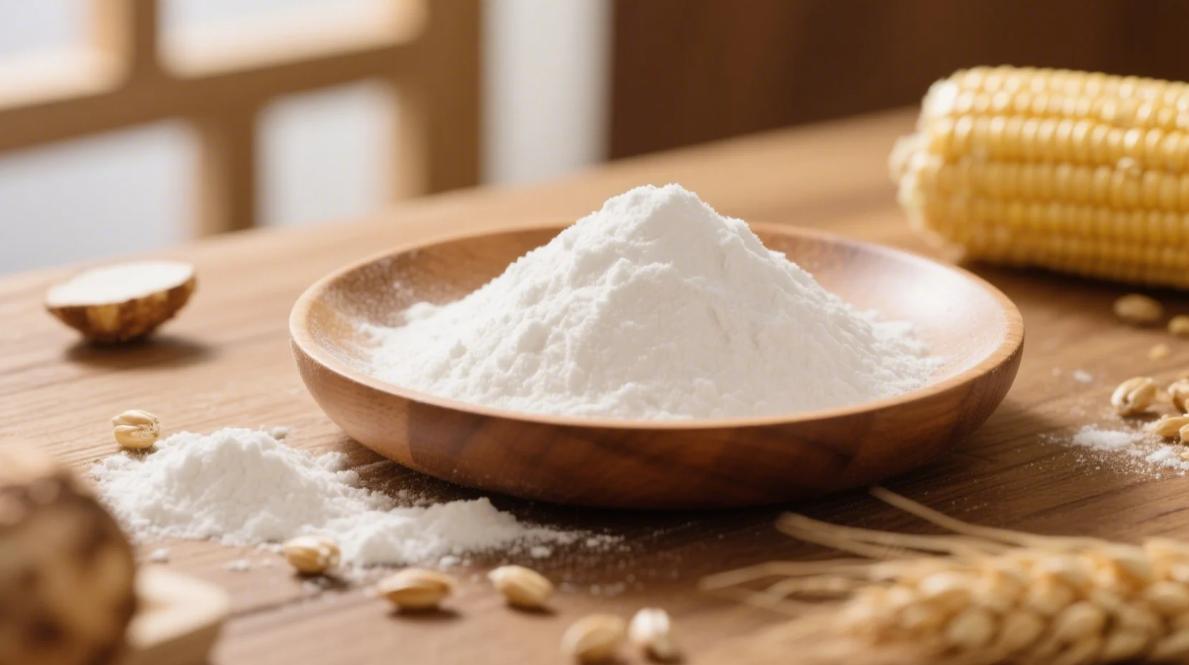1. What is Organic Maltodextrin?
Organic maltodextrin is a plant-based polysaccharide derived from non-GMO starches like corn, tapioca, or potatoes through enzymatic hydrolysis. Unlike conventional maltodextrin, its organic counterpart adheres to strict farming and processing standards:
- Non-GMO & Regenerative Sourcing: Uses crops grown without synthetic pesticides or glyphosate.
- Clean Production: Solar-dried and enzyme-treated to avoid chemical residues.
- Neutral Taste & Versatility: Acts as a thickener, stabilizer, or bulking agent in foods, supplements, and pharmaceuticals.
With a dextrose equivalent (DE) ranging from 5 to 20, organic maltodextrin balances solubility and low sweetness, making it ideal for sugar-free formulations.

2. Is Maltodextrin Safe?
Maltodextrin is generally recognized as safe (GRAS) by the FDA and EFSA for human consumption at ≤45g/day. However, nuances exist:
- Short-Term Safety: No carcinogenic or mutagenic risks in clinical trials.
- Glycemic Impact: High glycemic index (GI 110-136), causing rapid blood sugar spikes—caution advised for diabetics.
- Controversies:
- Gut Inflammation: Studies link high doses (>50g/day) to impaired gut barrier function and promotion of pathogenic bacteria like E. coli.
- Endogenous Risks: May exacerbate symptoms in individuals with Crohn’s disease or IBS.
Key Insight: While safe for most, moderation is critical—especially for those with metabolic or gut sensitivities.
3. Why is Maltodextrin in Supplements?
Maltodextrin’s role in supplements is multifaceted:
- Texture & Stability: Prevents clumping in protein powders and ensures even mixing.
- Caloric Density: Adds low-sweetness calories for weight gain formulations (4 kcal/g).
- Drug Delivery: Stabilizes active ingredients in medications and probiotic blends.
- Cost Efficiency: Cheaper than alternatives like acacia fiber, reducing product costs.
Industry Trend: Used in 60% of processed foods and 48% of medical nutrition products.
4. Is Organic Maltodextrin Safe for Dogs?
Pet safety hinges on dosage and sourcing:
- Digestibility: Easily absorbed, but high doses may cause bloating or diarrhea.
- Allergy Risks: Corn-derived maltodextrin could trigger reactions in dogs with grain sensitivities.
- Organic Advantage: Tapioca-based organic variants are gentler and gluten-free.
Vet Recommendations: Limit intake to <5% of daily calories and monitor for GI distress.
5. Does Maltodextrin Affect Your Gut?
The gut impact is dose-dependent and microbiome-specific:
- Negative Effects:
- Dysbiosis: Promotes Clostridium overgrowth while suppressing beneficial Bifidobacterium.
- Mucus Barrier Damage: Reduces protective mucin layers, increasing inflammation risk.
- Positive Roles:
- Prebiotic Potential: Low DE variants (e.g., resistant maltodextrin) may feed good bacteria.
Takeaway: Pair with prebiotics (e.g., inulin) to mitigate risks in sensitive individuals.
6. Is Maltodextrin Safe for the Liver?
Current evidence suggests minimal direct hepatotoxicity:
- Metabolic Pathway: Rapidly digested into glucose, processed like other carbs.
- Indirect Risks: Excessive intake may contribute to fatty liver disease via insulin resistance.
- Detox Support: No studies link maltodextrin to liver damage when consumed within guidelines.
Hepatic Health Tip: Opt for organic, non-GMO sources to avoid pesticide-related liver stress.
7. Future Innovations & Ethical Choices
- CRISPR-Enhanced Strains: Boosting yields by 85% with Yarrowia lipolytica microbes.
- Carbon-Negative Production: Solar-powered bioreactors aim for net-zero emissions by 2030.
- Transparent Labeling: Leading brands now disclose starch sources and DE values.
Smart Consumption in a Processed World

Organic maltodextrin bridges functionality and wellness, but its value depends on context. For humans, it’s a tool for metabolic efficiency; for pets, a cautious additive. By prioritizing certified organic sources, mindful dosing, and gut-friendly pairings, consumers can harness its benefits while navigating its complexities.